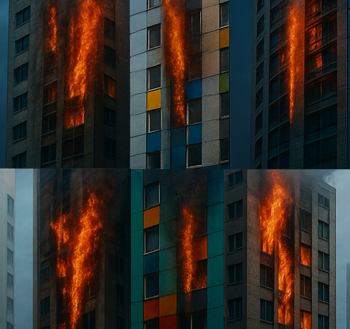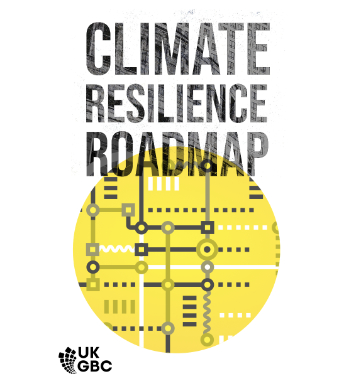Trends and predictions on the future of carbon-neutral buildings
As the world grapples with the realities of climate change, the construction industry has a significant role to play in reducing carbon emissions. In the UK, buildings contribute to 33% of the greenhouse gas (GHG) emissions and 40% of the global energy consumption. This article explores the concept of carbon-neutral buildings, current trends, future predictions, and the role of sustainable building practices in achieving carbon neutrality.
Contents |
[edit] Understanding carbon-neutral buildings
In a carbon-neutral building, energy efficiency is paramount. Designers and engineers use principles such as passive solar design, natural ventilation and high-efficiency insulation. In addition to energy-efficient design, carbon-neutral buildings also use renewable energy technologies to generate electricity. This can include solar panels, wind turbines, and in some cases, geothermal systems. The electricity generated by these systems can be used to power the building’s lighting, heating, and cooling systems, as well as any appliances or equipment in the building.
Current state of carbon emissions in the construction industry In the UK, the construction industry is a significant contributor to carbon emissions. The embodied carbon of a building, which includes the carbon emissions associated with the extraction, production and transportation of construction materials, as well as the carbon emissions from the construction process itself, can be equivalent to 20 years’ worth of its operational carbon emissions.
[edit] Trends in carbon-neutral buildings
The drive towards carbon-neutral buildings is gaining momentum, with several key trends shaping the future of the built environment. These trends reflect a growing commitment to sustainability, energy efficiency and technological innovation.
[edit] 1. Renewable energy sources
Solar panels and wind turbines are becoming a common sight on buildings across the UK. As the cost of these technologies continues to fall, they offer long-term cost savings, making them an increasingly attractive option for building owners and operators.
[edit] 2. Energy-efficient design
Designers and engineers are using principles such as passive solar design and high-efficiency HVAC systems to minimise energy consumption. Passive solar design takes advantage of the sun’s energy for heating and cooling, while high-efficiency HVAC systems use less energy to provide the same level of comfort.
[edit] 3. Sustainable building materials
These materials, which include recycled or reclaimed materials, can significantly reduce a building’s embodied carbon - the carbon emissions associated with the production, transport and disposal of building materials. By choosing sustainable materials, builders can reduce the environmental impact of their projects while often also improving the performance and aesthetics of their buildings.
[edit] 4. Smart technology integration
Smart thermostats, energy management systems and other technologies can optimise a building’s heating, cooling and lighting systems, further reducing energy consumption. These technologies can also improve comfort and convenience for building occupants.
[edit] Future predictions
The landscape of the UK’s built environment is set to undergo a significant transformation. The drive towards carbon neutrality is expected to accelerate, spurred by technological advancements, evolving government policies, and heightened public awareness of climate change. The Government’s Ten Point Plan for a green industrial revolution and net zero strategy provides a roadmap for this transition, outlining strategies for improving energy efficiency, promoting low-carbon heating solutions and encouraging the construction of energy-efficient new homes.
The decarbonisation of the UK’s electricity grid and the development of a low-carbon hydrogen sector are set to make it easier for buildings to reduce their carbon footprint. At the same time, investments in carbon capture usage and storage (CCUS) technologies could further help offset emissions from buildings and industrial processes. Beyond government initiatives, we anticipate a growing number of businesses and individuals investing in carbon-neutral buildings. As energy prices continue to rise, buildings that generate their own green electricity can offer a financially attractive proposition. The public sector is leading by example, with the government committed to achieving net-zero emissions from its operations by 2050. This sets a precedent for the private sector, demonstrating the feasibility and benefits of carbon-neutral buildings.
This article appears in the AT Journal issue 148, Winter 23 as "The future of carbon-neutral buildings: trends and predictions" and was written by Paul Bullard, Product Director, SFG20.
--CIAT
[edit] Related articles on Designing Buildings
- A zero-carbon UK by 2050?
- Achieving net zero in social housing.
- Actuate UK issues climate warning and urges action.
- Aligning net zero with the levelling-up agenda.
- Building Transformation: concepts and definitions.
- Carbon footprint.
- Carbon negative.
- Carbon neutral.
- Circular Construction in Regenerative Cities (CIRCuIT).
- Circular economy.
- Climate Change Act.
- Construction skills crisis threatens UK net zero goals.
- CO2nstruct Zero programme grows to over 70 businesses.
- CRC Energy Efficiency Scheme.
- Design life.
- Earth overshoot day.
- Ecological impact assessment.
- Economic sustainability.
- Life.
- Nearly zero-energy building.
- Net Zero All Party Parliamentary Group NZ APPG.
- Net zero by 2050.
- Net zero (whole life) carbon.
- Net zero carbon building.
- Net zero carbon emissions.
- Net zero strategy: build back greener.
- Low or zero carbon technologies.
- Product-life extension: product-life factor.
- Reduce, reuse, recycle.
- Regenerative design.
- Skilled workforce unable to meet net zero ambitions.
- Smoothing the path to net zero.
- Sustainable materials.
- Sustainable procurement.
- The sustainability of construction works.
- Thermal imaging of the building fabric in the net zero world.
- Transform to Net Zero.
Featured articles and news
Government consultations for the summer of 2025
A year of Labour, past and present consultations on the environment, the built environment, training and tax.
CMA competitiveness probe of major housing developers
100 million affordable housing contributions committed with further consultation published.
Homes England supports Greencore Homes
42 new build affordable sustainable homes in Oxfordshire.
Zero carbon social housing: unlocking brownfield potential
Seven ZEDpod strategies for brownfield housing success.
CIOB report; a blueprint for SDGs and the built environment
Pairing the Sustainable Development Goals with projects.
Types, tests, standards and fires relating to external cladding
Brief descriptions with an extensive list of fires for review.
Latest Build UK Building Safety Regime explainer published
Key elements in one short, now updated document.
UKGBC launch the UK Climate Resilience Roadmap
First guidance of its kind on direct climate impacts for the built environment and how it can adapt.
CLC Health, Safety and Wellbeing Strategy 2025
Launched by the Minister for Industry to look at fatalities on site, improving mental health and other issues.
One of the most impressive Victorian architects. Book review.
Common Assessment Standard now with building safety
New CAS update now includes mandatory building safety questions.
RTPI leader to become new CIOB Chief Executive Officer
Dr Victoria Hills MRTPI, FICE to take over after Caroline Gumble’s departure.
Social and affordable housing, a long term plan for delivery
The “Delivering a Decade of Renewal for Social and Affordable Housing” strategy sets out future path.
A change to adoptive architecture
Effects of global weather warming on architectural detailing, material choice and human interaction.
The proposed publicly owned and backed subsidiary of Homes England, to facilitate new homes.
How big is the problem and what can we do to mitigate the effects?
Overheating guidance and tools for building designers
A number of cool guides to help with the heat.
The UK's Modern Industrial Strategy: A 10 year plan
Previous consultation criticism, current key elements and general support with some persisting reservations.
Building Safety Regulator reforms
New roles, new staff and a new fast track service pave the way for a single construction regulator.

























